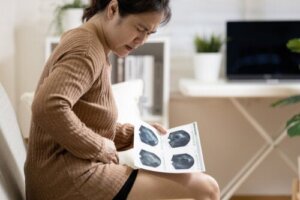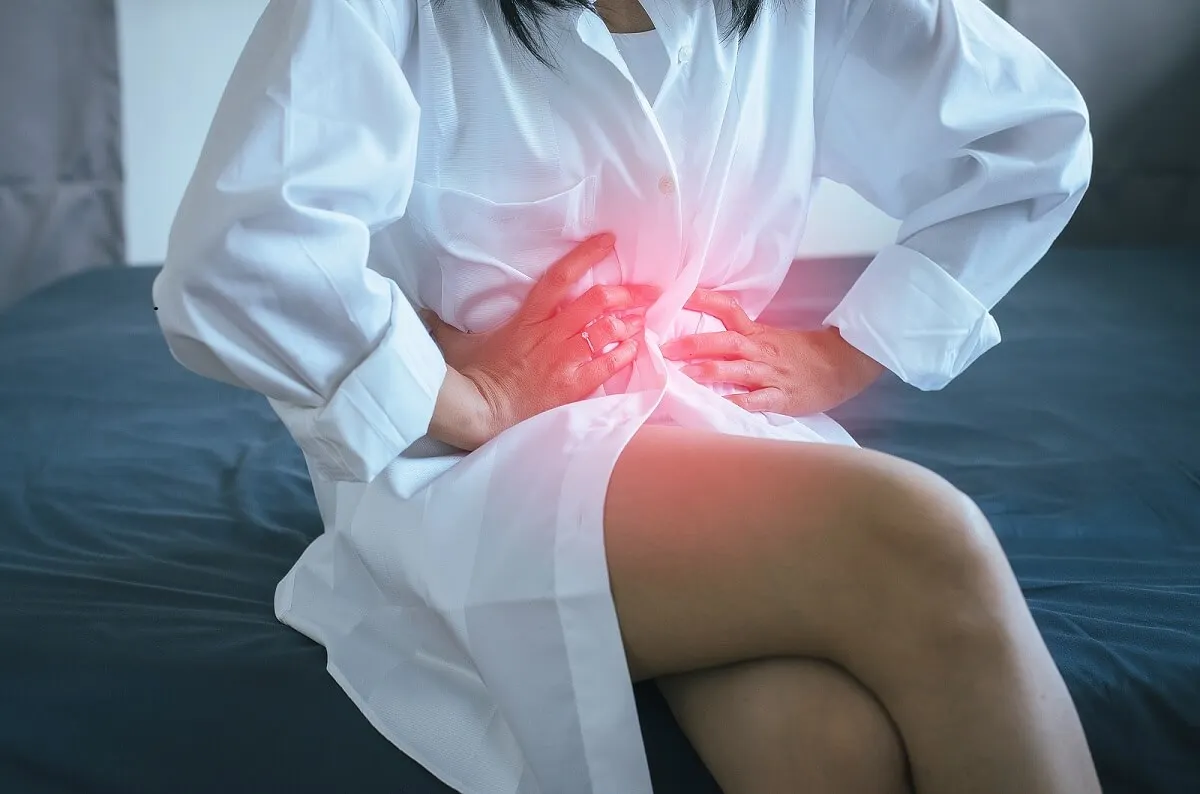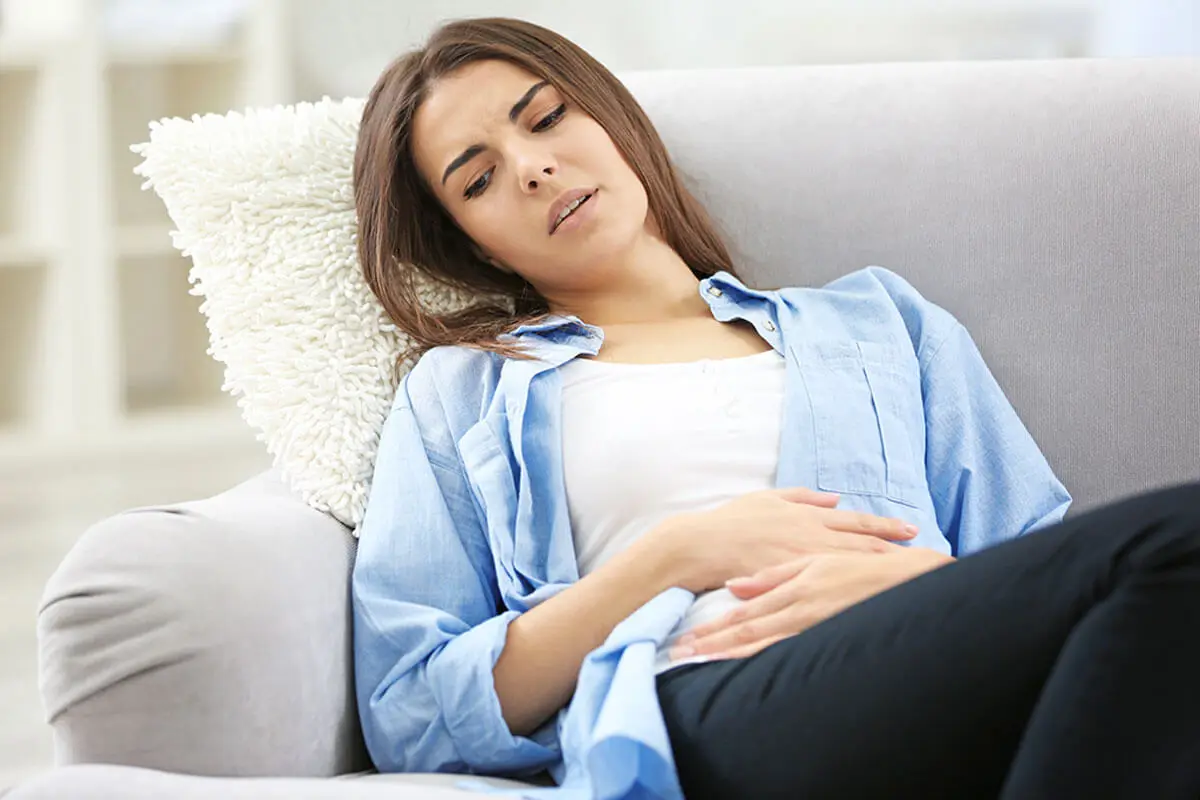Twinges and Pain in the Uterus: Causes and Medical Evidence


Written and verified by the doctor Maryel Alvarado Nieto
The appearance of twinges and pain in the uterus is usually a reason for gynecological consultation. Its causes are varied and range from trivial factors related to the menstrual cycle to pathologies involving any structure of the abdominopelvic cavity.
It’s precisely this multifactorial origin that makes a thorough medical evaluation necessary. The physician or gynecologist is obliged to determine if there’s a surgical urgency or if another type of treatment is required. He or she must even rule out the possibility of pregnancy. Are you interested in knowing more about this? Read on!
Main causes of twinges and pain in the uterus
When evaluating the possible causes of twinges and pain in the uterus, the expert will check for the presence of other symptoms, such as bleeding or abnormal secretions in the genitals. They will also check for possible gastrointestinal or urinary symptoms. In general, the causes are usually the following conditions.
Dysmenorrhea
The main cause of twinges and pain in the uterus is related to menstruation, known as “dysmenorrhea”. It affects more than half of women of childbearing age and severe cases lead to absenteeism from school or work.
Menstrual cramps occur cyclically at the beginning of each menstrual period and usually last two to three days. In addition, it can bring other symptoms such as the following:
- Nausea and vomiting
- Diarrhea
- Headaches
- General malaise
- Fatigue
The pain in dysmenorrhea is described as cramping, localized in the lower abdomen, although it may radiate to the lower back or thighs. The condition is classified as primary when there’s no apparent cause for the pain.
Meanwhile, it’s secondary when there’s an underlying pathology. Because of this, it’s important to question the characteristics with which it appears and the relationship it has with menstruation.

Another interesting article for you: Natural Remedies for Menstrual Cramps and Other Menstrual Problems
Possible causes of pain
Menstruation is triggered by a series of cyclical hormonal changes. Among these, there’s a decrease in the concentration of progesterone, which responds to the degeneration of the corpus luteum.
Consequently, the production of substances known as prostaglandins, which are involved in uterine contraction and vasoconstriction, is stimulated. As a result, the blood supply to the endometrium decreases, leading to ischemia and pain.
Are further medical tests necessary in dysmenorrhea?
First of all, it’s necessary to evaluate whether the twinges and pain in the uterus are associated with the menstrual cycle. If the cramping appears with the menstrual period and has occurred on previous occasions, a complete gynecologic examination is performed.
When the findings are within normal limits, no further testing is necessary. To manage the pain, analgesics may be used for three to four days.
However, it’s sometimes necessary to check that the pain isn’t related to processes other than menstruation. For this reason, complementary studies such as hemacytometry, a urine test, and abdominopelvic ultrasound can be requested.
Similarly, it’s important to rule out genital malformations when the pain appears in the first menstruations and is too intense.
Mittelschmerz syndrome: confusing twinges and pain in the uterus
Another frequent cause of pelvic pain is the one that occurs around ovulation. In medical terms, it’s known as periovulatory or Mittelschmerz syndrome. It’s described as a pain in the lower abdomen, predominantly affecting one side only.
It can appear between days 7 and 24 of the menstrual cycle and has the distinctive feature of changing hemiabdomen in the following months.
Causes of Mittelschmerz syndrome
There are two theories that attempt to explain the origin of periovulatory pain. The first is based on the painful distension of the surface of the ovary – in which the follicle is growing – which occurs just before ovulation takes place.
The second responds to an increase in the secretion of prostaglandins by the action of luteinizing hormone, which generates the contraction of the perifollicular smooth muscle fibers and, with it, the sensation of pain.
Mittelschmerz isn’t a syndrome that originates in the uterus. However, due to its high frequency and misunderstanding of its location, it’s possible to confuse it with other causes of pain, especially when it’s severe and predominantly right-sided. It’s usually similar to appendicitis.
Therefore, it’s essential to have a thorough check-up that includes the history of similar pain on other occasions.
Discover more here: Four Pieces Of Advice To Reduce Your Menstrual Flow
Pelvic inflammatory disease
Upper genital tract infection is grouped into an entity known as “pelvic inflammatory disease” (PID), which also affects neighboring organs. In this pathology, abdominal pain worsens during sexual intercourse or at the end of menstruation. Similarly, it may involve the appearance of a foul-smelling vaginal discharge and the sensation of thermal rises.
Physical examination reveals tenderness to cervical mobilization, which is considered a suggestive finding of PID. Complementary tests such as hemacytometry, C-reactive protein and erythrocyte sedimentation rate shouldn’t delay the initiation of early antibiotic treatment. On the other hand, the performance of a vaginal smear and the use of ultrasound can be very useful.
Causes of pain in the uterus due to PID
The ascent of microorganisms from the vagina is the main cause of pelvic inflammatory disease. The most common germs involved in a sexually active woman are Neisseria gonorrhoeae and Chlamydia trachomatis.
However, not all infections are caused by a sexually transmitted microorganism. There are risk factors that increase the chances of developing PID, such as the following:
- Risky sexual practices. Multiple sexual partners and unprotected sex.
- Presence of intrauterine device (IUD), especially during the first weeks after its placement.
- Previous history of pelvic inflammatory disease.
- Vaginal exploration or manipulation of the uterine cavity, such as hysteroscopy or hysterosalpingography.
Endometriosis
This is another cause of pelvic pain. It often appears before menstruation, increases in intensity during menstruation, and then gradually decreases.
It’s important to investigate the characteristics of menstrual cycles, as they’re often of prolonged duration with heavy bleeding. In fact, sometimes they’re more frequent and appear before 28 days.

The origin of endometriosis
Endometriosis occurs due to the endometrial tissue outside the uterine cavity. The origin of the pain and the association with the menstrual cycle respond to the hormonal changes that occur during this process.
The physical examination provides little information, but the chronicity of the medical condition and the characteristics of the menses (menstruation blood and other discharges) can serve as a starting point for diagnosis.
Complementary examinations in endometriosis
The alteration of some tumor markers (Ca-125 and Ca-19-9) are described in the presence of endometriosis. However, they aren’t specific to this entity and, therefore, more research is needed to determine their true usefulness.
Imaging studies may yield certain findings in some cases, but they aren’t considered ideal for diagnosing this condition. Laparoscopy is the invasive technique that provides accurate information, as it can identify foci of endometrial implantation outside the uterus.
However, it’s necessary to take biopsy samples of suspicious lesions, as their histology will confirm the diagnosis. Some authors say that ovarian hormonal suppression with improvement of symptoms can also be used as a method of diagnosis.
Consultation with a gynecologist is essential
In most cases, twinges and pain in the uterus are not a serious condition. In fact, they usually occur on an ad hoc basis. Nevertheless, it’s advisable to discuss it with your doctor or gynecologist to receive timely and appropriate care, if necessary.
All cited sources were thoroughly reviewed by our team to ensure their quality, reliability, currency, and validity. The bibliography of this article was considered reliable and of academic or scientific accuracy.
- Ezcurra, R.; Lambertos, N.; Peñas, V.; Dolor Abdomino-Pélvico en Ginecología; An. Sist. Sanit. Navar.; 32 (Suplemento 1): 49 – 58; 2009.
- Cid, J.; Dolor Pélvico Crónico; Rev. Soc. Esp. Dolor; 1; 29 – 39; 2006.
- Amaya, G.; Dismenorrea; XIX Curso de Actualización en Ginecología y Obstetricia; Editorial Artes y Letras S.A.S.; 291 – 301; 2010.
- Morgan, F.; Morgan, F.; Báez, J.; Quevedo, E.; Dismenorrea: Una Revisión; Rev Med UAS; 5 (1): 29 – 42; 2015.
- Baines, P.; Allen, G.; Pelvic Pain and Menstrual Related Illnesses; Emergency Medicine Clinics of North America; 19 (3): 763 – 780; 2001.
- Baquedano, L.; Lamarca, M.; Puig, F.; Ruiz, M.; Enfermedad Inflamatoria Pélvica: un Reto en el Diagnóstico y Tratamiento Precoz; Revista Chilena de Obstetricia y Ginecología; 79 (2); 2014.
- Hernández, M.; Diagnóstico de la Endometriosis; Perinatología y Reproducción Humana; 23: 25 – 29; 2009.
This text is provided for informational purposes only and does not replace consultation with a professional. If in doubt, consult your specialist.








